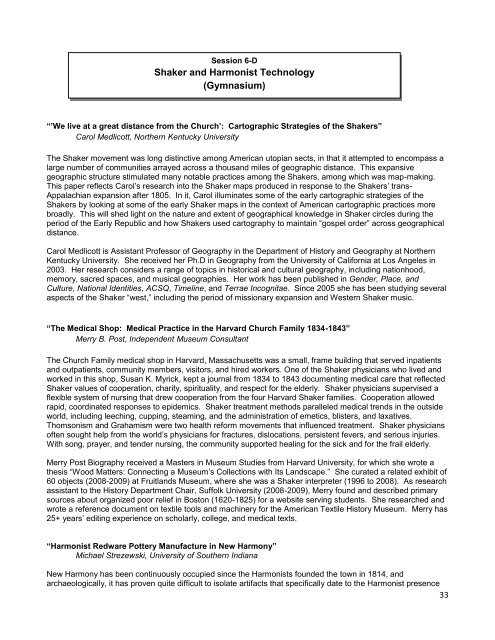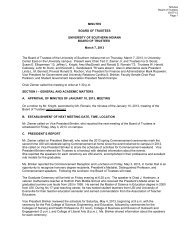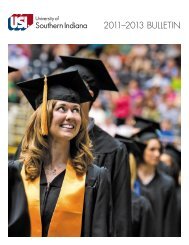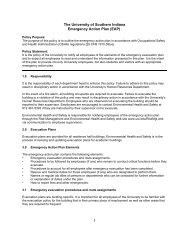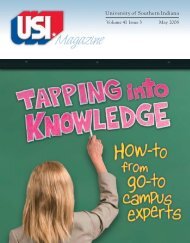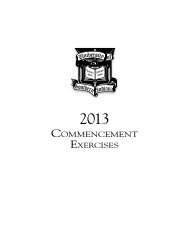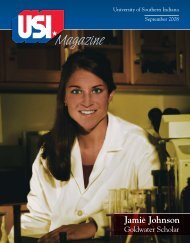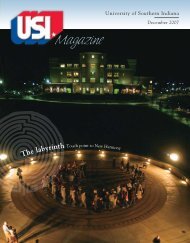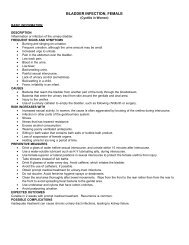Communal Studies Association, 2010 New Harmony, Indiana ...
Communal Studies Association, 2010 New Harmony, Indiana ...
Communal Studies Association, 2010 New Harmony, Indiana ...
You also want an ePaper? Increase the reach of your titles
YUMPU automatically turns print PDFs into web optimized ePapers that Google loves.
Session 6-DShaker and Harmonist Technology(Gymnasium)“‟We live at a great distance from the Church‟: Cartographic Strategies of the Shakers”Carol Medlicott, Northern Kentucky UniversityThe Shaker movement was long distinctive among American utopian sects, in that it attempted to encompass alarge number of communities arrayed across a thousand miles of geographic distance. This expansivegeographic structure stimulated many notable practices among the Shakers, among which was map-making.This paper reflects Carol‘s research into the Shaker maps produced in response to the Shakers‘ trans-Appalachian expansion after 1805. In it, Carol illuminates some of the early cartographic strategies of theShakers by looking at some of the early Shaker maps in the context of American cartographic practices morebroadly. This will shed light on the nature and extent of geographical knowledge in Shaker circles during theperiod of the Early Republic and how Shakers used cartography to maintain ―gospel order‖ across geographicaldistance.Carol Medlicott is Assistant Professor of Geography in the Department of History and Geography at NorthernKentucky University. She received her Ph.D in Geography from the University of California at Los Angeles in2003. Her research considers a range of topics in historical and cultural geography, including nationhood,memory, sacred spaces, and musical geographies. Her work has been published in Gender, Place, andCulture, National Identities, ACSQ, Timeline, and Terrae Incognitae. Since 2005 she has been studying severalaspects of the Shaker ―west,‖ including the period of missionary expansion and Western Shaker music.“The Medical Shop: Medical Practice in the Harvard Church Family 1834-1843”Merry B. Post, Independent Museum ConsultantThe Church Family medical shop in Harvard, Massachusetts was a small, frame building that served inpatientsand outpatients, community members, visitors, and hired workers. One of the Shaker physicians who lived andworked in this shop, Susan K. Myrick, kept a journal from 1834 to 1843 documenting medical care that reflectedShaker values of cooperation, charity, spirituality, and respect for the elderly. Shaker physicians supervised aflexible system of nursing that drew cooperation from the four Harvard Shaker families. Cooperation allowedrapid, coordinated responses to epidemics. Shaker treatment methods paralleled medical trends in the outsideworld, including leeching, cupping, steaming, and the administration of emetics, blisters, and laxatives.Thomsonism and Grahamism were two health reform movements that influenced treatment. Shaker physiciansoften sought help from the world‘s physicians for fractures, dislocations, persistent fevers, and serious injuries.With song, prayer, and tender nursing, the community supported healing for the sick and for the frail elderly.Merry Post Biography received a Masters in Museum <strong>Studies</strong> from Harvard University, for which she wrote athesis ―Wood Matters: Connecting a Museum‘s Collections with Its Landscape.‖ She curated a related exhibit of60 objects (2008-2009) at Fruitlands Museum, where she was a Shaker interpreter (1996 to 2008). As researchassistant to the History Department Chair, Suffolk University (2008-2009), Merry found and described primarysources about organized poor relief in Boston (1620-1825) for a website serving students. She researched andwrote a reference document on textile tools and machinery for the American Textile History Museum. Merry has25+ years‘ editing experience on scholarly, college, and medical texts.“Harmonist Redware Pottery Manufacture in <strong>New</strong> <strong>Harmony</strong>”Michael Strezewski, University of Southern <strong>Indiana</strong><strong>New</strong> <strong>Harmony</strong> has been continuously occupied since the Harmonists founded the town in 1814, andarchaeologically, it has proven quite difficult to isolate artifacts that specifically date to the Harmonist presence33


